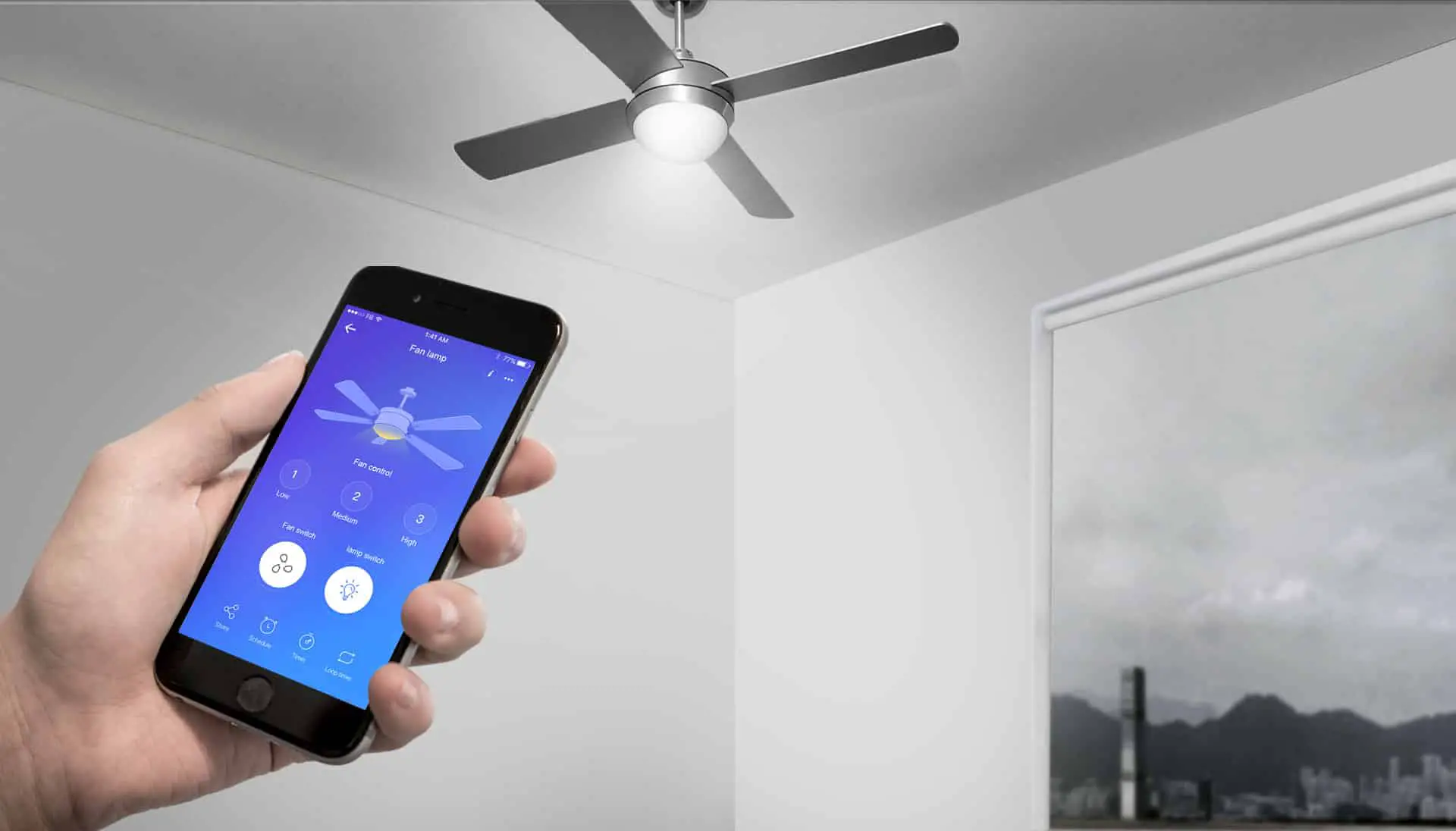We all know that ceiling fans are a great way to keep cool in the summer and warm in the winter. But did you know that there are now ceiling fans that can be controlled by your smartphone or voice assistant?
That’s right, you can now get a ceiling fan that will turn on and off, change speeds, and even reverse direction – all with the touch of a button or the sound of your voice. So, if you’re looking for a way to make your life just a little bit easier (and cooler), read on to learn how to make your ceiling fan smart.
How do smart ceiling fans work?
Smart ceiling fans work by using a variety of sensors to detect when someone is in the room and adjust the speed of the fan accordingly. For example, some smart ceiling fans use motion sensors to detect when someone enters the room and then automatically adjust the speed of the fan based on the person’s movements.
Other smart ceiling fans use temperature sensors to detect when the room is getting too warm or too cold and then adjust the fan speed accordingly. By using these various sensors, smart ceiling fans are able to provide a comfortable environment for everyone in the room while also saving energy.
Why do you need a smart ceiling fan?
If you’re looking to upgrade your home’s ceiling fans, you may be wondering if you should go for traditional or smart models. Smart ceiling fans offer a number of advantages over their traditional counterparts, including the ability to be controlled remotely, integrate with other smart home devices, and offer features like energy tracking.
Here are just a few reasons why you might want to consider investing in a smart ceiling fan for your home.
One of the biggest advantages of smart ceiling fans is the fact that they can be controlled remotely. Whether you’re at work or on vacation, you can always adjust your fan’s settings to suit your needs. With a traditional ceiling fan, you would need to physically adjust the settings each time you wanted to make a change.
Another advantage of smart ceiling fans is that they can often integrate with other smart home devices. This means that you can control them using voice assistants like Amazon Alexa or Google Home, or even through apps on your smartphone. If you have other connected devices in your home, such as thermostats and light bulbs, this can make it even easier to create a cohesive and convenient smart home experience.
Finally, many smart ceiling fans also come with energy-tracking features that can help you save money on your electricity bill. By monitoring your usage and adjusting the speed of the fan accordingly, these ceiling fans can help keep your energy costs down.
How to make a dumb ceiling fan smart
If you have a ceiling fan that you’d like to make smarter, there are a few things you can do. First, you’ll need to purchase a universal smart hub for automation, and a smart switch or remote that is compatible with your ceiling fan. You will need a smart hub for ceiling fan from which you can remotely control the ceiling fan, making it smart.
Once you have the switch or remote, follow these instructions:
1. Turn off the power to your ceiling fan at the fuse box or circuit breaker.
2. Remove the existing light switch plate or pull chain from your ceiling fan.
3. Unscrew and remove the wires from the terminals on your old switch or pull chain. Make a note of which wire goes where so you can reattach them to the new switch in the same configuration.
4. Install your new smart switch or remote according to the manufacturer’s instructions. Be sure to attach the wires to the correct terminals.
5. Turn on the power to your ceiling fan and test it out.
How to use a smart ceiling fan
There are a few different ways to make a ceiling fan smart. One way is to buy a smart ceiling fan, which will come with instructions on how to use it. Another way is to use a smart home system, like Amazon Echo or Google Home, which can be used to control your ceiling fan. Or, you can install a smart switch, like the Lutron Caseta Wireless Smart Fan Speed Control, which will let you control your ceiling fan from your smartphone.
To use a smart ceiling fan, first make sure that it is compatible with your smart home system. Then, follow the instructions that come with the ceiling fan to connect it to your system. Once it is connected, you will be able to control the ceiling fan using your voice, mobile app, or other methods that are available through your smart home system.
Conclusion
With the advent of smart technology, there are now more ways than ever to make our homes more efficient. Making a ceiling fan smart is a great way to save energy and money, while also providing greater convenience. There are a number of different ways to make a ceiling fan smart, but the best way will depend on your specific needs and preferences. With a little research, you should be able to find the perfect solution for your home.


